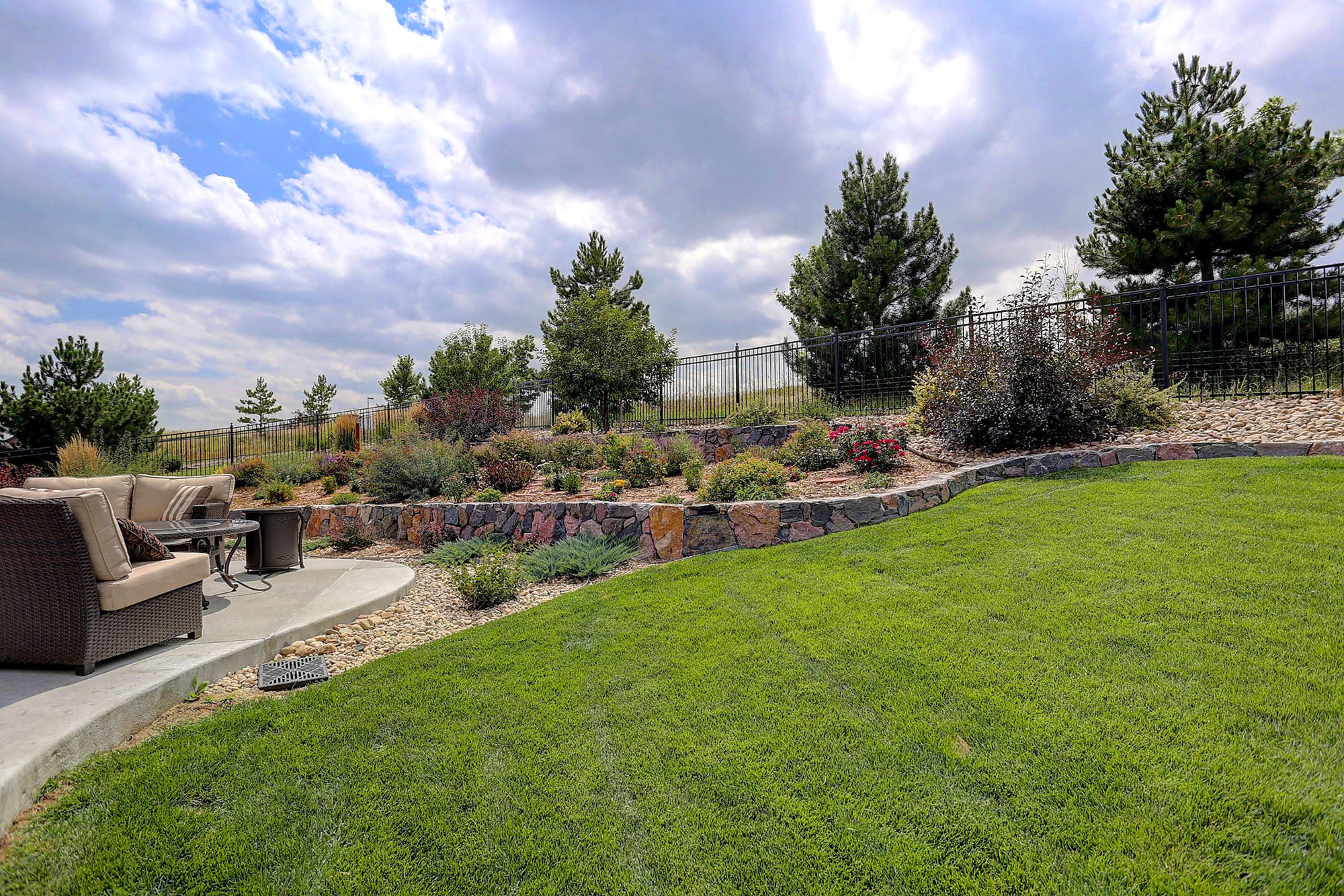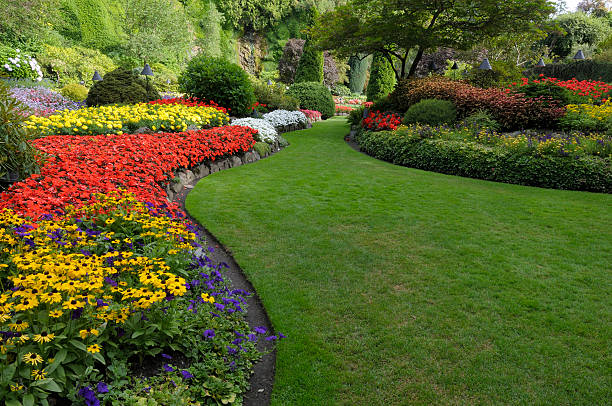It feels like living on the surface of the sun in Texas, especially during the hottest summer months. Heat is relentless and can quickly devastate a lawn if proper measures are not taken. Places like Irving tend to have to pay a little more attention to lawns, which need that little extra care when temperatures heat up. Keeping a green lawn can be a tough task during a hot summer in Texas, but with the right techniques, this is actually well and truly doable. Whether you are a gardening enthusiast or a homeowner looking to improve your yard’s curb appeal, this guide will prove to be the best method of preserving the vibrant look of your lawn, no matter the extreme heat of the day. You can consult with Irving Landscaping companies when you need professional assistance. Your lawn will remain green all summer long using these services.

Understanding a Texas Summer Lawn Problem
Summer weather in Texas is marked by extreme heat, quite high humidity in various parts of the state, and long dry spells. Given all this, brown or patchy grass can easily happen to lawns, leading householders to become furious about the situation. But first things first: learning how to see things from a lawn maintenance standpoint from what specifically the challenges of Texas are.
1. Excessive Heat: Texas is known for its warm temperatures. Throughout a lot of regions, temperatures regularly hit triple digits for a number of days in succession; extreme heat will make grass turn yellow, dry up, and even die if not maintained properly.
2. Lack of Rain: Drought pervades a big portion of Texas. Without much natural water, there are fewer places to irrigate than elsewhere, especially in those regions having to maintain lawns.
3. Soil Conditions: While many parts of Texas have soils that do not retain much water and can cause grass to become drier during the very dry summer months.
Dealing with those conditions head on with intelligent lawn care strategies, you can still have a yard that thrives even at the highest heat levels in Texas.

Best Practices to Keep Your Lawn Green in Hot Texas Summers
Choose Heat-Tolerant Grass
Not all grass species can tolerate the intense Texas heat. If you are planting a new lawn or replacing portions of your grass, opt for species that are naturally drought and heat-tolerant. Here are a few good options for Texas lawns:
- Bermuda Grass: This grass has become the most popular in Texas, as it thrives under intense heat and drought. They have high traffic endurance, which makes them suitable for homes with children or pets.
- Zoysia Grass: They are among the types that thrive well under intense heat since they are dense and drought-hardy. Their growth rate is somewhat slow; hence they don’t need regular mowing.
- St. Augustine Grass: This species is particularly ideal for shaded areas with good heat tolerance. Though more water-hungry than Bermuda or Zoysia, it is ideal for shaded lawn conditions.
- Buffalo Grass: Buffalo grass is native and very water-conservative. After establishment, it uses extremely small quantities of water.
The type of grass to be used is the starting point for a lush and healthy lawn, even when temperatures run riot.
Water Wisely and Thoroughly
Proper watering will be responsible for keeping your lawn green and fresh all through the hot Texas summers. This has proved to be the biggest mistake that homeowners commit: to water either too often or too seldom. In this scenario, one should water deeply but infrequently.
- Early Morning Watering: Early morning water is also preferred as it falls between 6 to 10 AM. It will allow water to soak during the day and water to spread to the deeper soil layers not to get evaporated in the scorching sun.
- Deep watering: It must be done so much that it reaches the root system and encourages your grass to grow roots deeper. Shallow waterings mean weak root systems that are easy victims of drought stress.
- Monitor the water levels: The lawn needs about 1 to 1.5 inches of water per week from either rain or irrigation. You can use a rain gauge or a shallow container to measure how much water your lawn gets.
For instance, extremely warm summers render irrigation a no-brainer for many Irvings homeowners. You can adapt it to water wisely, especially when drought-like conditions or watering bans are inevitable.
Mow High and Often
In the Texas summer, the longer you mow, the better. A grass that is cut too short will be more stressed and more prone to heat and weed damage.
- Maintain an Appropriate Mowing Height: Most varieties of grass should be mowed to about 3 to 4 inches when it is warm. This added length will shade the soil, thereby minimizing evaporation of the water and allowing the grass to retain more.
- Don’t Cut More Than 1/3 of the Blade: Cutting too much grass in one pass can shock the plant, especially when it’s hot. Mow more often, but take off less each time.
- Keep Your Mowing Blades Sharp: Dull blades make ragged cuts on the ends of the blades, which causes disease and water-loss issues. Be sure your blades are sharp for a cleaner cut.
Fertilize Wisely
In Texas summer, fertilizing your lawn is a good practice to keep it green and lively throughout the year, but excessive application may do more bad than good. Apply fertilizer in a strategic manner while during the hot Texas climate.
- Use Slow-Release Fertilizer: Slow-release fertilizers will offer a constant nutrient supply to your lawn without smothering it during scorching summer heat. Try to find a fertilizer that contains a balanced ratio of nitrogen, phosphorus, and potassium.
- Fertilize Late in Spring or Early in Summer: Fertilize around late spring before the summer heat peels out. This helps your lawn obtain nutrients required to form strong roots and resist dehydration.
- Do not Fertilize in the Heat of the Summer: Most fertilizers can stress your lawn when they’re applied in the heat of midsummer. If it is a necessary time of year to fertilize your lawn, be sure and use an organic fertilizer that won’t burn your grass.
Aerate Your Lawn
Compacted soils can make it difficult for water, air, and nutrients to reach the grassroots. Aerating your lawn will help fix this problem and give you healthy grass growth, even through the long hot Texas sun.
- When to Aeriate: Aerate your lawn in the spring or early summer, just before strong heat. It will help your grass to grow deeper roots and prepare for summer heat.
- Aerating How to aerate your lawn: Apply a core aerator by extracting small plugs of soil from your lawn. This increases the penetration of water and nutrients into the deeper ground, which makes the grass more resistant to dryness.
Apply mulch on grass clippings
Leaving clippings on your lawn after you mow is an excellent way to help keep your lawn green in the Texas heat. Natural mulch, these clippings help retain moisture in the soil and provide nutrients as they decompose.
- Use a Mulching Mower: When available, cut with a mulching mower to finely chop the clippings, which will be more susceptible to quick decomposition and even distribution.
- Prevent Clumping: Whenever you see clumps of grass clippings, spread them flat with a rake to prevent smothering the grass below.
Manage and Prevent Weeds
Weeds are more than just an aesthetic nuisance. Weeds compete for the resources, including water, nutrients, and sunlight that your grass needs to stay green and healthy during the sweltering summer months.
- Pre-Emergent Herbicides: Apply pre-emergent herbicides in the spring to help prevent those little weeds like crabgrass from sprouting later in the summer.
- Target Herbicides: When summer gets here and you do catch some weeds sprouting, target them and spray on an as-needed basis. However, use caution when applying herbicide because some can burn your lawn if it’s too hot.
- Healthy Lawn as a Defense: The best defense against weeds is to have a thick, healthy lawn. A good, strong lawn is more than enough to overshadow the resources of any weed.
Improve Your Lawn with Professional Tree Services
With the grass, ensuring your trees continue to be healthy and well-groomed is an essential way to enjoy a healthy landscape. To homeowners in Irving, tree services are also very important to handle the health and aesthetics of your trees. J. Chavez Tree Services offers professional tree care services like trimming, pruning, and removal of trees. All of these are always aimed at keeping your property looking the best it can be. Their team of experts will ensure that your outdoor space is improved and that your trees thrive to complement a lush lawn. Visit J. Chavez Tree Services to learn more about their services and how they can help you achieve a beautiful, well-maintained landscape this summer!
Conclusion
It doesn’t have to be as intimidating of a job as one may first imagine to have a healthy green lawn all through the hot Texas summers. With a good appreciation of the particular challenges that Texas weather and conditions bring, and by following best practices: choosing the right grass for the job, watering smart, mowing at the best height, and applying wise fertilization, a lawn will be lush, green, and healthy throughout summer. So, if things go wrong or if you just need some professional guidance then there are always ways open for landscaping services in Irving that are dedicated to your Texas lawn. With proper effort and some good care routine, your lawn could easily be kept for many years, looking vibrant, resilient, and beautiful – regardless of the height of Texas heat.

